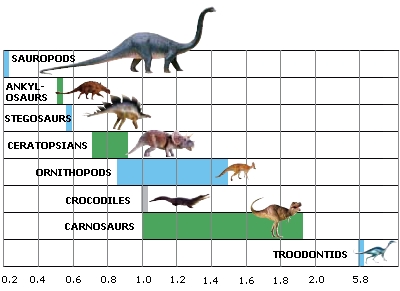DK Science: Brains & Intelligence
How intelligent were dinosaurs? It is difficult to know how smart dinosaurs were because their brains rarely survive as fossils. Casts taken from the inside of fossil skulls show that some dinosaurs had large brains, while others had small ones. A big brain does not necessarily mean higher intelligence. Scientists look at the size of the brain in relation to the animal’s total body weight. They also take into account the animal’s behaviour. A dinosaur’s intelligence was suited to its lifestyle and the tasks it needed to perform.
Troodon was a keen-eyed hunter. It grew to 2 m (7 ft) long, and for its size, it had a large brain. This may have given it the mental capacity and sophistication to trap its prey. The cassowary has a similar build and brain size to Troodon, so it is possible the speedy dinosaur had the same level of intelligence as the modern bird.
This diagram shows the weight of an animal’s brain as a percentage of the weight of its body. Dinosaurs had smaller brains relative to their size than birds or mammals. At the bottom of the chart, Diplodocus had a brain weighing 100,000 times less than its body weight. Compare this with a small bird’s brain, which is only 12 times lighter than its overall weight. The brain of an adult human is about 40 times lighter than its body. This is about the same ratio as the brain to body weight of a mouse. These comparisons alone should not be used to indicate intelligence, which must also be judged on how animals behave in comparison with other animals in their environment.
The Encephalization Quotient (EQ) is the ratio of the brain weight of an animal to the brain weight of a similar animal of the same body weight. The scale is designed so that the expected score for an animal is one. Anything above this figure indicates a larger than predicted brain size. The EQ number can be used to compare extinct and living animals and may be helpful in suggesting how smart an animal was.
This diagram plots the range of EQ scores for different groups of dinosaurs (shown by the coloured bands). These scores are compared to the scores for their living relatives, the crocodiles. The diagram shows the sauropods had low EQs. They have a narrow range of scores because the body weights and brain sizes of the dinosaurs in this group were quite uniform. The carnosaurs had scores between about 1 and 1.9. This group had a variety of body weights and brain sizes, and these account for the wide EQ range. The troodontids were the smartest dinosaurs with an EQ of around 5.8.
To order this book direct from the publisher, visit DK's website.



